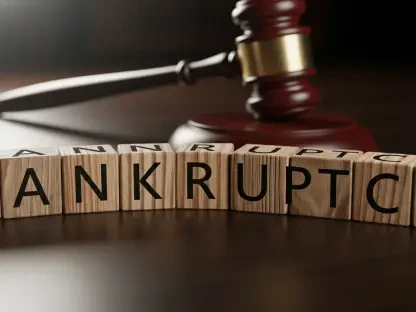As the financial capital of the United States, New York has always been at the forefront of innovation and regulation. In recent years, the state’s evolving approach toward cryptocurrency has garnered significant attention. The intersection of stringent financial regulations and a burgeoning tech environment has created both challenges and opportunities for stakeholders. By examining the regulatory landscape, corporate movements, legal challenges, and federal initiatives, a comprehensive understanding of New York’s crypto market in 2025 can be achieved.
Regulatory Landscape
New York’s history of rigorous financial oversight has not wavered in the realm of cryptocurrency. The state’s commitment to ensuring consumer protections while fostering technological innovation is evident in its approach. In 2023, Attorney General Letitia James proposed a set of comprehensive regulations aimed at bolstering investor protection and transparency in the crypto industry. These regulations introduced stringent “know-your-customer” (KYC) provisions, mandating brokers to have a deep understanding of their clients’ essential facts. This regulatory framework is designed to uphold the highest standards of integrity and accountability within the rapidly evolving crypto market.
Additionally, the proposals include requirements for crypto platforms to reimburse customers for unauthorized asset transfers or fraud. This measure is crucial in building consumer trust and ensuring financial stability within the digital asset space. Furthermore, the regulations seek to restrict the use of the term “stablecoin” unless the digital asset is backed 1:1 with U.S. currency or high-quality liquid assets. These efforts are indicative of New York’s proactive stance in creating a secure and transparent environment for both investors and businesses.
Task Force and Evaluations
In early 2025, State Senator James Sanders Jr. introduced a bill to establish a 17-member crypto task force. The aim of this task force is multifaceted, focusing on assessing the economic and environmental impacts of cryptocurrencies in New York. The task force comprises representatives from the Department of Financial Services, environmental groups, and academic experts. By bringing together these diverse stakeholders, the task force aims to provide a well-rounded analysis that will inform the state’s future crypto policies.
The findings from the task force are expected to play a crucial role in shaping New York’s regulatory framework. The integration of insights from various sectors ensures that the state’s policies strike a balance between fostering economic growth and maintaining environmental sustainability. This holistic approach is essential in addressing the multifaceted challenges presented by the crypto industry. The task force’s evaluations will contribute significantly to developing regulations that are both robust and adaptable to the dynamic nature of digital assets.
Corporate Movements and Market Expansion
The clarity and rigor of New York’s regulatory framework have made it an attractive destination for corporate relocation and investment. One notable example is Circle Internet Financial, the company behind the stablecoin USDC, which announced plans to move its global headquarters from Boston to New York City. This strategic relocation underscores New York’s appeal as a hub for crypto enterprises seeking to leverage its well-established financial infrastructure. The city’s regulatory transparency and synergy with traditional financial institutions make it an ideal environment for companies aiming to integrate digital assets with conventional finance systems.
The interest in cryptocurrency within New York is not limited to corporate movements alone. There has been a significant rise in cryptocurrency adoption among the state’s residents. A 2023 report by Coinbase revealed that approximately 19% of New Yorkers own digital assets, positioning New York among the top ten states in the U.S. for crypto ownership. This growing acceptance and integration of cryptocurrencies into daily financial activities signify a broader trend of digital asset adoption within the state. The increasing ownership rates reflect not only the public’s trust in digital assets but also the effectiveness of the state’s regulatory efforts.
Legal Challenges and Consumer Protection
Despite the promising market opportunities, the crypto sector in New York is not without its legal hurdles. These challenges underscore the importance of compliance and consumer protection in the evolving industry. One significant legal development occurred in February 2025 when a U.S. District Judge ruled that Coinbase must confront a lawsuit alleging the illegal sale of securities without proper registration. This case highlights the level of scrutiny that crypto platforms face in adhering to existing financial regulations and the ongoing need for compliance.
The legal challenges faced by the crypto industry are indicative of the state’s commitment to upholding consumer protection and market integrity. Ensuring that crypto platforms operate within the bounds of the law is essential in maintaining investor confidence and safeguarding financial stability. The case against Coinbase serves as a critical reminder to all market participants about the importance of regulatory compliance and the potential legal ramifications of non-compliance.
Federal Initiatives and National Impact
On the national stage, President Donald Trump has articulated an ambitious vision for the United States to establish itself as the “undisputed Bitcoin superpower and crypto capital of the world.” In a pre-recorded address to the Blockworks Digital Assets Summit held in New York, President Trump outlined his plans to foster innovation and investment within the crypto sector. Criticizing previous administrations for their restrictive policies, Trump announced initiatives to introduce clear regulations for stablecoins and market structures.
These federal initiatives are poised to have a significant impact on New York’s local crypto ecosystem. By providing a clear regulatory framework, the federal government aims to stimulate investment and encourage the growth of the digital asset market. This national vision aligns with New York’s efforts to balance innovation with consumer protection, potentially reinforcing the state’s position as a leading financial hub. President Trump’s commitment to fostering a supportive regulatory environment at the federal level may act as a catalyst for further corporate movements and market expansion within New York.
Conclusion
As the financial capital of the United States, New York has consistently led in innovation and regulation. Recently, the state’s evolving stance on cryptocurrency has attracted significant attention. The convergence of strict financial regulations with a growing tech sector has brought both hurdles and opportunities for those involved. To gain a thorough understanding of New York’s cryptocurrency market in 2025, it’s crucial to analyze the regulatory landscape, observe corporate behaviors, tackle legal challenges, and consider federal initiatives. This multifaceted approach allows for a comprehensive grasp of the potential and pitfalls within the state’s dynamic crypto environment. Understanding these elements will provide a clear picture of how New York navigates the complex world of digital currencies, positioning itself at the cutting edge of financial technology and regulation in the coming years.









